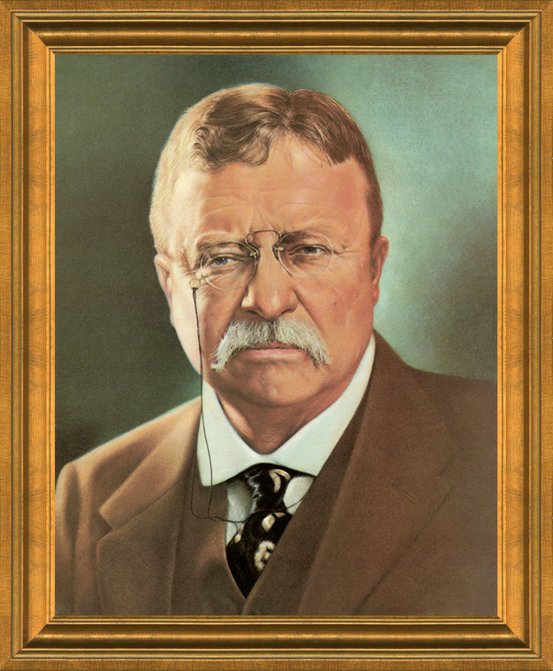 October 1, 2019 (Tuesday)
October 1, 2019 (Tuesday)
Woodrow Wilson was born in Staunton, Virginia December 28,1856, and died February 3, 1924, in Washington, D.C. He was president 1913-1921. His father was a Presbyterian minister. He was married 1885-1914 to Ellen Axson, who died, and Edith Wilson, 1915-1924.
During the Civil War his father was a pastor in Augusta, Georgia, and during Reconstruction a professor in Columbia, South Carolina.
After graduation from Princeton (then the College of New Jersey) and the University of Virginia Law School, Wilson earned his doctorate at Johns Hopkins University and entered upon an academic career.
Wilson gained a reputation as a conservative young professor of political science and became president of Princeton in 1902.
His growing national reputation led some conservative Democrats persuade him to run for Governor of New Jersey in 1910. In the campaign he asserted his independence of the conservatives and of the machine that had nominated him, endorsing a progressive platform, which he pursued as governor.
He was nominated for President at the 1912 Democratic Convention and campaigned on a program called the New Freedom, which stressed individualism and states’ rights. In the three-way election he received only 42 percent of the popular vote but an overwhelming electoral vote.
Wilson maneuvered through Congress major legislation perceived as positive by progressives . By virtue of this legislation and the slogan “he kept us out of war,” Wilson narrowly won re-election. After the election Wilson concluded that America could not remain neutral in the World War. On April 2,1917, he asked Congress for a declaration of war on Germany.
Massive American effort slowly tipped the balance in favor of the Allies.
After the Germans signed the Armistice in November 1918, Wilson promoted a League of Nations, but the election of 1918 had shifted the balance in Congress and his efforts to establish an organization to maintain peace failed.
The President, against the warnings of his doctors, had made a national tour to mobilize public sentiment for the Versailles Treaty, which included proposals for a League of Nations, but he suffered a stroke and nearly died. Tenderly nursed by his second wife, Edith Bolling Galt, he lived until 1924.

Thomas Woodrow Wilson – President 1913-1921




